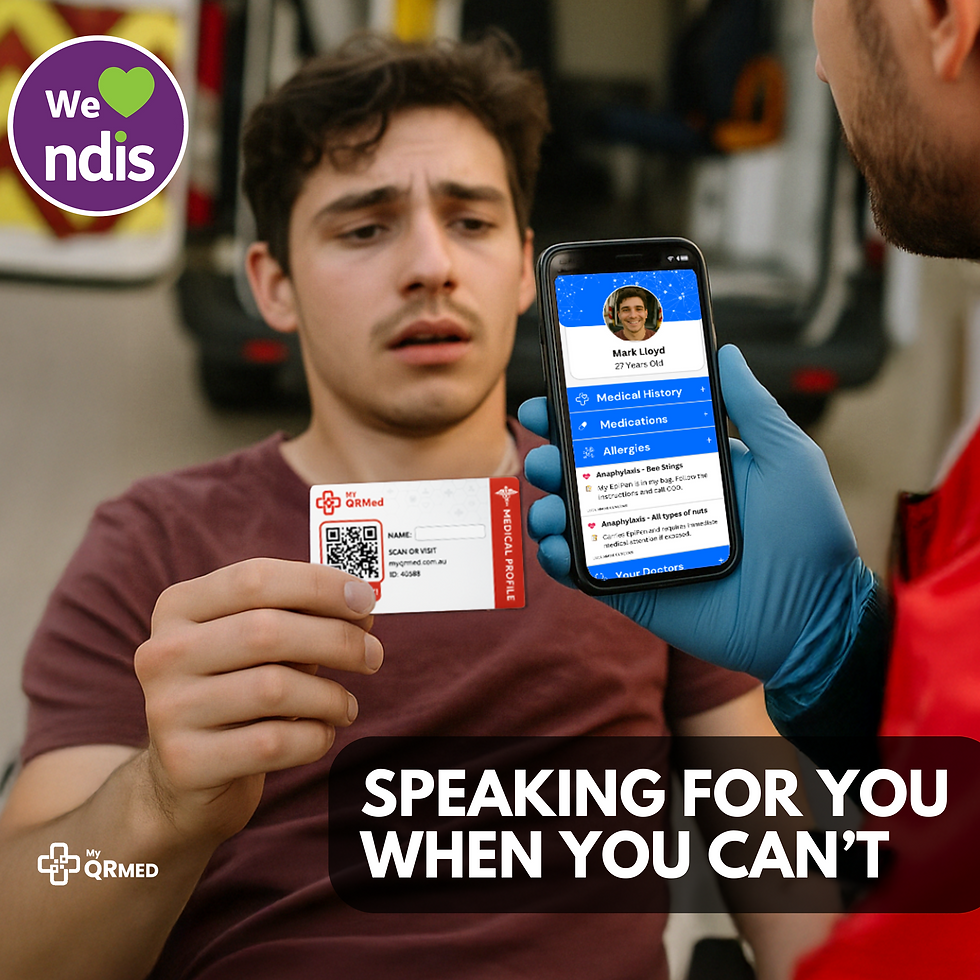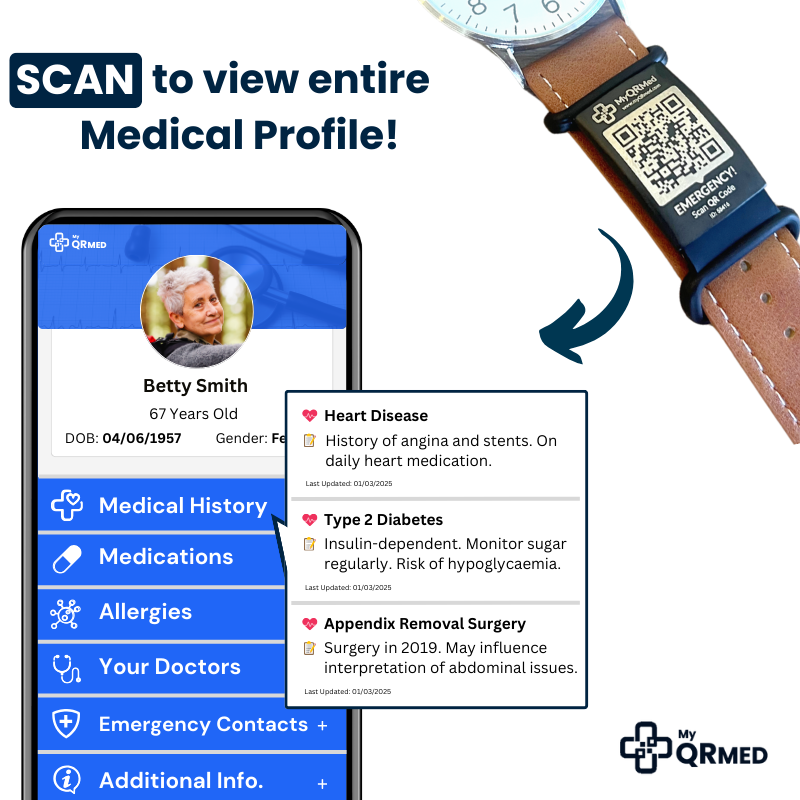How MyQRMed Supports Stroke Survivors: Ensuring Quick Access to Vital Information for Better Care
- HARRISON LOPEZ
- Apr 24
- 3 min read
How MyQRMed Supports Stroke Survivors: Ensuring Quick Access to Vital Information for Better Care
A stroke is a life-changing event that often requires ongoing treatment and care. For stroke survivors, managing the aftermath involves frequent medical appointments, physical therapy, and medication adjustments. In emergencies or during recovery, having easy access to critical medical information can be life-saving. MyQRMed provides a powerful solution by enabling stroke survivors to keep essential health information at their fingertips, ensuring they receive the best possible care when it’s needed most.

Why MyQRMed is Essential for Stroke Survivors
1. Immediate Access to Vital Medical Information
After a stroke, it’s crucial for healthcare providers to know the patient’s medical history, current medications, and treatment plan. MyQRMed ensures that stroke survivors, caregivers, and emergency responders have instant access to:
Stroke type and details (ischemic, hemorrhagic)
Date of the stroke and any significant events
Ongoing medications (e.g., blood thinners, antihypertensives)
Medical conditions (e.g., high blood pressure, diabetes, heart disease)
Emergency contacts
Allergies and sensitivities to medications
In an emergency, having this information readily available can help emergency responders and doctors act quickly and appropriately, potentially preventing further complications.
2. Medication Management
Stroke survivors often need to take medications that manage their condition and reduce the risk of another stroke. These medications may include blood thinners, antihypertensive medications, and antiplatelet drugs. MyQRMed allows individuals to maintain an up-to-date list of medications, which can be accessed by healthcare providers during medical appointments or in an emergency. This reduces the risk of harmful drug interactions and ensures that doctors are aware of any recent changes in the treatment plan.
3. Emergency Preparedness
A stroke survivor may have long-term effects that make communication during an emergency difficult, such as speech or cognitive impairments. In such cases, MyQRMed’s QR-enabled medical ID ensures that healthcare providers can access important medical details even if the individual cannot communicate effectively. This provides peace of mind to both the patient and their loved ones.
4. Peace of Mind for Families and Caregivers
Stroke survivors often require support from family members and caregivers for their day-to-day activities. MyQRMed makes it easier for caregivers to access critical information and assist the individual as needed, whether it’s remembering important medications, understanding the stroke’s effects, or managing potential health risks.
5. Faster Emergency Response
In case of another medical emergency, such as a heart attack or another stroke, MyQRMed enables emergency responders to quickly access the patient’s medical history and treatment plan. This can be lifesaving, as medical teams can act quickly to provide the necessary care, reducing the risk of further harm or complications.
Claiming MyQRMed Through NDIS, Home Care Packages (HCP), CHSP, or DVA
For stroke survivors eligible for government support, MyQRMed may be claimable through the National Disability Insurance Scheme (NDIS), Home Care Packages (HCP), Commonwealth Home Support Programme (CHSP), or Department of Veterans’ Affairs (DVA). MyQRMed may be classified as an assistive technology product, helping manage the ongoing needs of stroke survivors.
How to Claim MyQRMed Through These Programs
NDIS Participants – If you have an NDIS plan that includes assistive technology or daily living supports, MyQRMed may be claimable. Simply order through MyQRMed, and we provide invoices for both self-managed and plan-managed participants.
Self-Managed – Purchase MyQRMed and submit the invoice to NDIS for reimbursement.
Plan-Managed – Order MyQRMed and provide the invoice to your plan manager for payment.
NDIA-Managed – Speak to your support coordinator or NDIS planner to check if MyQRMed is covered by your funding.
Home Care Packages (HCP) – If you’re approved for an HCP, MyQRMed may be included in your care plan under assistive technology or medication management supports.
Commonwealth Home Support Programme (CHSP) – If you qualify for CHSP funding, your provider may be able to cover the cost of MyQRMed as an essential personal safety item.
Department of Veterans’ Affairs (DVA) – Veterans and their dependents can check with DVA to see if MyQRMed is covered under their programs.
Why Choose MyQRMed for Stroke Survivors?
Instant Access to Medical Information – Immediate access to critical details during an emergency.
Medication Management – Keep track of medications and avoid dangerous interactions.
Helps with Communication in Emergencies – Provides critical information if the stroke survivor cannot communicate.
Easy to Update and Use – Update your profile anytime, ensuring it reflects the most current information.
Claimable Through NDIS, HCP, CHSP, and DVA – Eligible participants can claim MyQRMed through these programs.
Stay Safe and Informed with MyQRMed
Living with the aftermath of a stroke requires careful management, ongoing treatment, and constant vigilance. MyQRMed offers stroke survivors a practical, reliable, and simple way to manage their health information and stay safe. By providing immediate access to vital medical data, MyQRMed ensures that stroke survivors and their healthcare teams are always well-informed and prepared.
Visit www.myqrmed.com.au to learn more and order today.



Comments